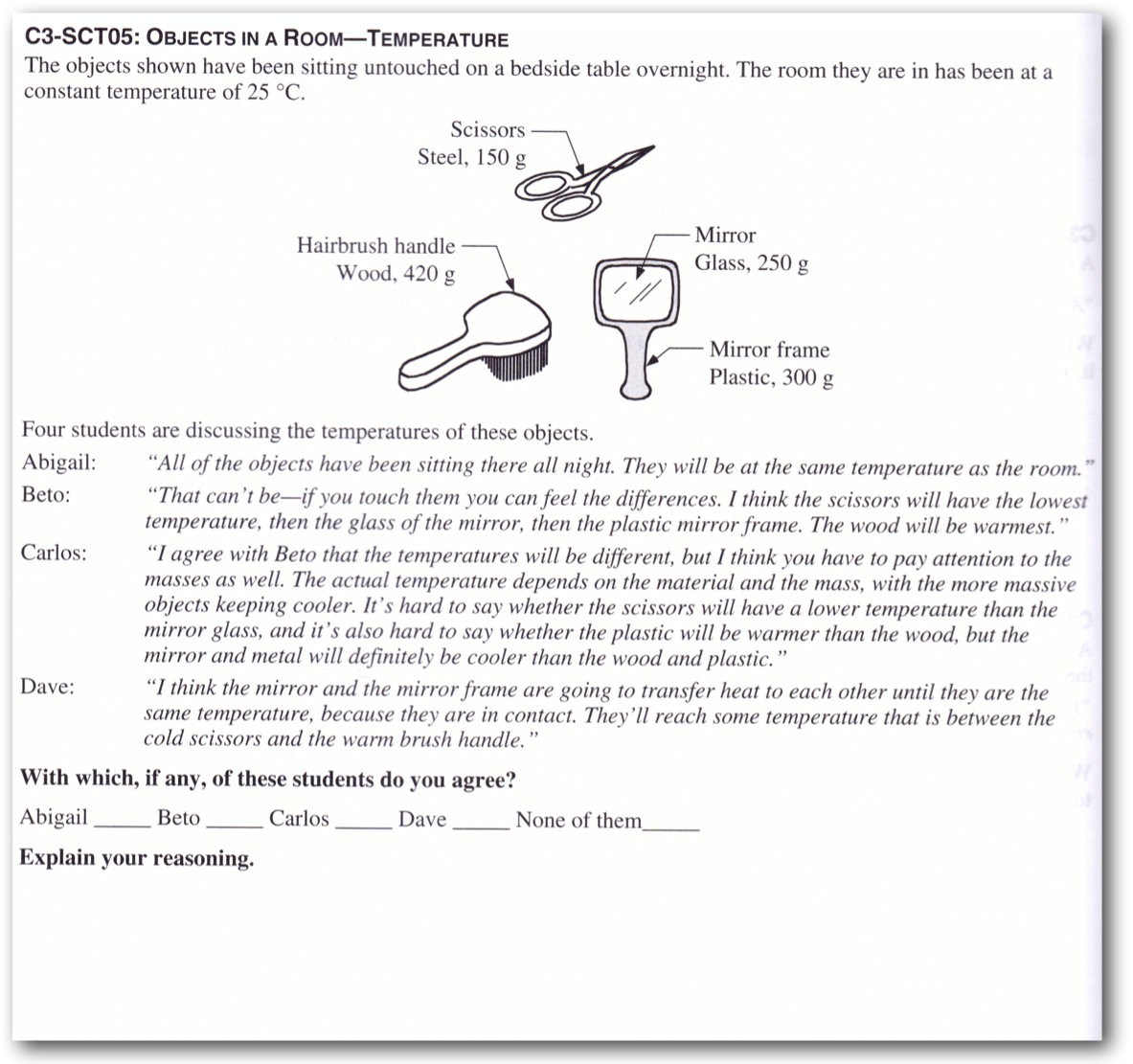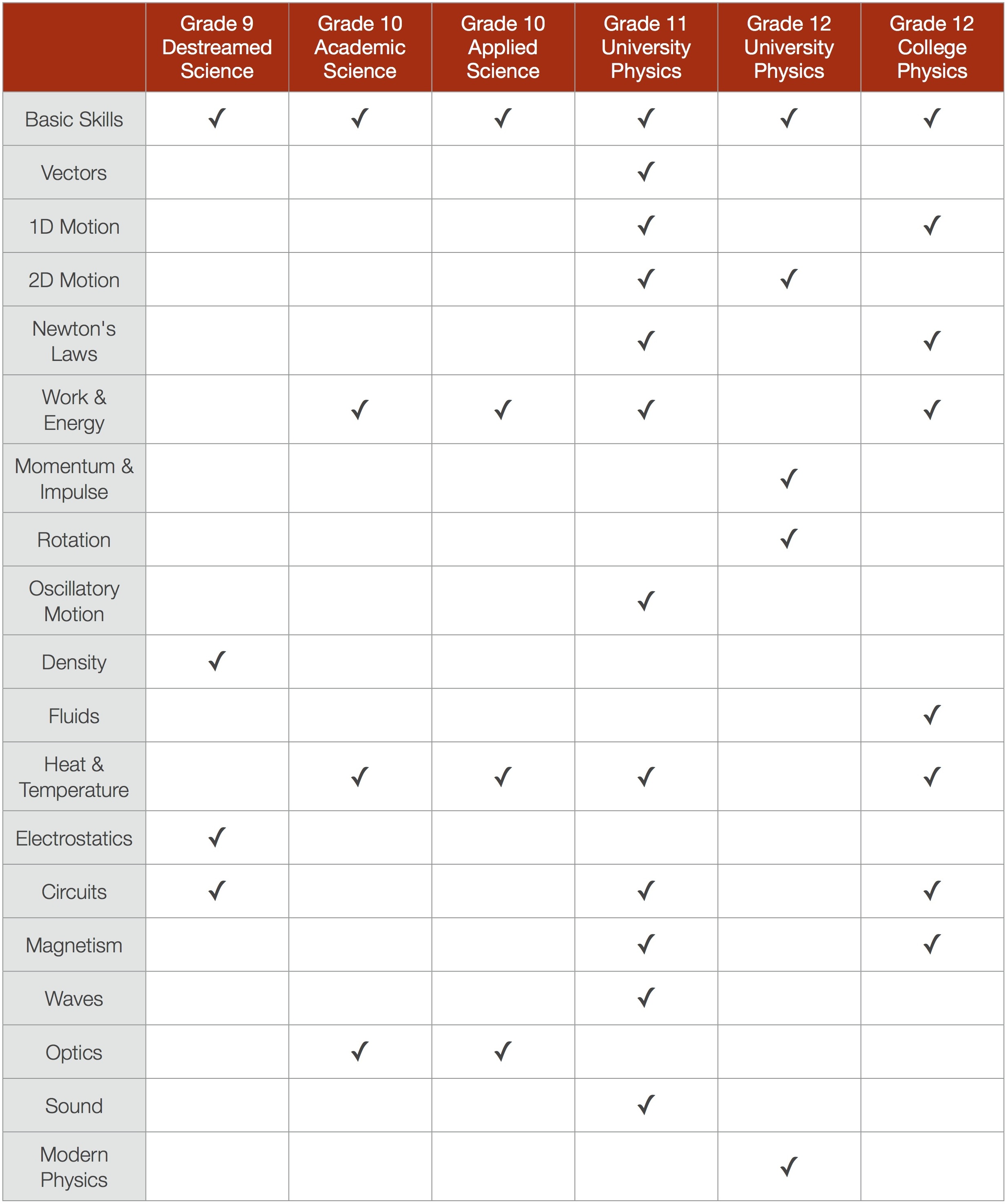February 14, 2023 Filed in:
ReviewRobert Prior, ePublisher OAPT Newsletter
science@robertprior.ca
Getting students to think about a problem, as opposed to simply plugging numbers into a formula, is a never-ending challenge. It is possible to design exercises that focus attention on concepts, but it is difficult, and most textbook questions are of the plug-and-chug variety.
This book provides a collection of exercises that emphasize conceptual reasoning, many of which are useful for high school physics classes.
What are TIPERs?
TIPERs are Tasks Inspired by Physics Education Research — apparently simple questions that require students to think about physics concepts rather than rushing straight to a calculation or regurgitating a memorized definition.
All tasks follow the same basic format. The situation is presented and the task explained. Students then provide their answer and explain their reasoning (the latter, of course, being a key part of using the tasks).
 Sample task from TIPERs: Sensemaking Tasks for Introductory Physics.
Sample task from TIPERs: Sensemaking Tasks for Introductory Physics.
There are ten types of tasks:
- Bar Chart Tasks: These tasks require students to represent values as bar charts. They are particularly useful for conserved qualities.
- Comparison Tasks: These tasks present two variations of a physics situation, and require them to be compared in a specified criterion.
- Contention Tasks: These present several competing explanations or solutions, and students must decide which (if any) they agree with, explaining their reasoning.
- Linked Multiple Choice Tasks: These have a succession of multiple-choice questions about the same situation. Students must pick an answer and explain their reasoning.
- Ranking Tasks: These present several variations of a physics situation and require them to be ranked by a specified criterion. Ties are possible.
- Representation Tasks: These present a situation using one form of representation and require students to present the same situation using another form.
- Troubleshooting Tasks: These tasks present a situation with an incorrect solution. Students must identify the problem and explain how to correct it.
- Qualitative Reasoning Tasks: These give a situation and task, without numbers, and require a reasoned explanation.
- What’s Wrong Tasks: These tasks present a situation and task, with a solution. Students must decide if the solution is correct; if it is, they explain why, if not, they identify what’s wrong and explain how to correct it.
- Working Backward Tasks: These tasks present a problem with missing information, and a solution. Students must work backwards from the solution to determine the missing information.
What topics are covered?
Although it is aimed at college and university audiences, the TIPERs book covers a wide variety of physics topics. Even grade nine teachers will find some of the tasks useful.
 Using TIPERs in class
Using TIPERs in class
I have used TIPERs in class for years. In my class students sit in assigned groups of 3-4 (which are rearranged every unit) and most work is done in these groups, including TIPERs.
I start out by handing out a TIPER to every student and giving them five or so minutes to work on them individually (the exact time varies depending on the task and the class. Then they discuss their answers in their groups and try to come to a consensus on the correct solution. Like a panel of judges, dissenting verdicts are possible! Each group presents its solution to the class (as do dissenters), then students discuss the task again in their small groups to see if they want to revise their answers.
While this is going on I circulate and observe, gauging their understanding and noting misconceptions. During the second round of discussions (after class presentations) I will try to point out misconceptions by asking Socratic questions; ideally students will notice their own misconceptions with a bit of gentle guidance.
Finally I present my solution and address any misconceptions I noticed that I haven’t already addressed.
Depending on the time available (or the class) I might skip the second round of group discussions. Sometimes almost every student gets a correct solution and explanation (which is wonderful) so there’s no need for further class time.
Sometimes I use a TIPER as a survey of student understanding: I hand it out and collect the individual responses, then go through the responses to determine what misconceptions and weaknesses need to be addressed in forthcoming lessons. I might create my own Contention Task out of the most common solutions and use that as the basis for a regular TIPER-centred discussion. As with many teaching techniques, flexibility is key.
I deliberately don’t use TIPERs for quizzes or tests. I want them to be a non-threatening tool to help students increase their understanding, and to help me understand where I need to focus my teaching. For the same reason I don’t mark their solutions (although I do take notes; after all,
Growing Success mandates using observation to asses student learning).
Where to buy TIPERs
TIPERs can be bought directly from the
publisher, or from other
online booksellers. It is a 449 page softcover book, priced at $67 when this review was written.
Reference
Hieggelke, Curtis J, et al. TIPERs: Sensemaking Tasks for Introductory Physics. Pearson, 2015.
Tags: Pedagogy



